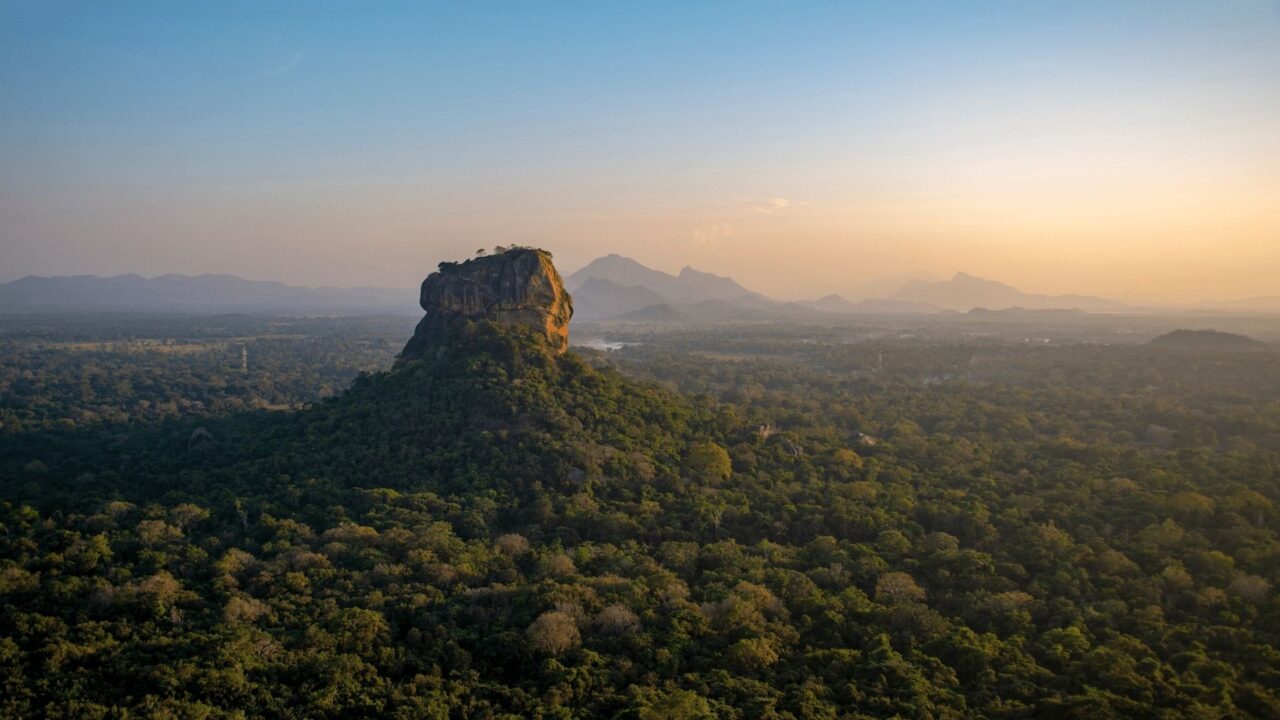
Sri Lanka, with its teardrop-shaped island, is one of the most fascinating destinations to visit in the world. Yes, it has tempting beaches, boutique hotels abounding, and breathtakingly picturesque train excursions that will make you want to hang your head out the window. Sri Lanka, on the other hand, is rich in culture and history, with eight UNESCO World Heritage Sites.
For such a small country, there are a lot of UNESCO sites!
A World Heritage Site is a location designated by UNESCO (the United Nations Educational, Scientific, and Cultural Organization) as having significant cultural or physical importance.
It could be a monument, a temple, a city, a forest, or another notable location. Sri Lanka has six UNESCO World Heritage Sites, all of which are historical sites. The majority of them are situated in Sri Lanka’s famous Cultural Triangle, a treasure trove of temples, monuments, and historic cities in the island’s center. The Sinharaja Forest Reserve and the Central Highlands are the other two natural UNESCO World Heritage Sites.
It is Sri Lanka’s earliest ancient capital, and it served as the country’s capital for the longest period of time. It is significant to locals in terms of religion, history, and culture, and it is well-known around the world for the well-preserved remnants of the Great Sri Lankan Civilization.
The largest of the ancient cities of Sri Lanka, Anuradhapura has an area of about 16 square miles with sprawling ruins, temple remnants stone Stupas and Buddhist monasteries. The most popular of these are the Ruwanweliseya Dagoba built in 140BC and the huge holy fig tree believed to be where Lord Buddha was enlightened.
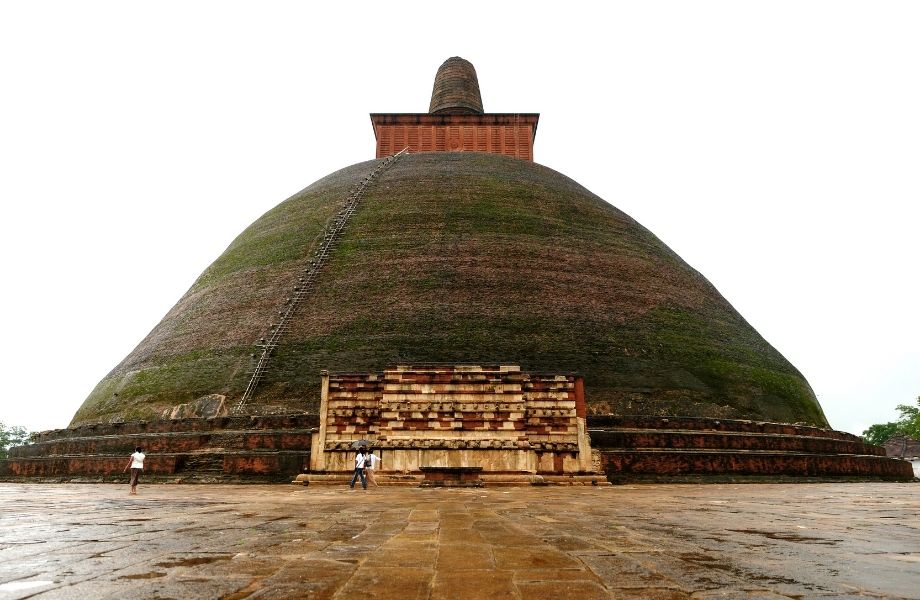
King Vijayabahu I, who vanquished the Chola invaders in 1070 CE and reunited the country under a national sovereign, made Polonnaruwa the capital city for the first time. While Vijayabahu’s victory and the relocation of kingdoms to the more strategic Polonnaruwa is noteworthy, the true Polonnaruwa Hero of history is his grandson, Parakramabahu I. During the Chola dynasty’s short reign, the city of Polonnaruwa was known as Jananathamangalam.
Polonnaruwa was the second capital of Sri Lanka, after Anuradhapura. Bhramanic constructions and a garden city from the chola civilization of the 12th century are some of the remains that can be found here. Tombs, Temples and other ruins are included in the archaeological attractions of Polonnaruwa.
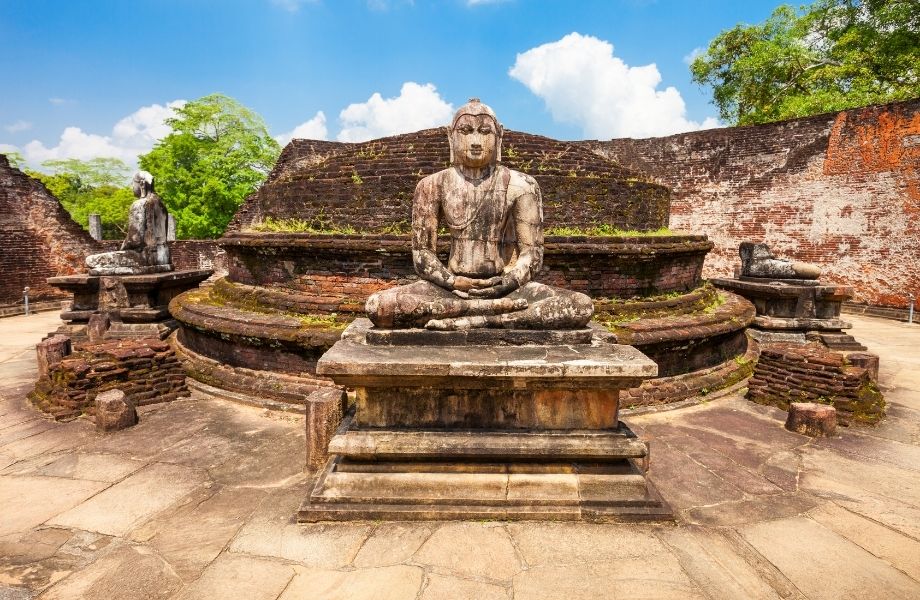
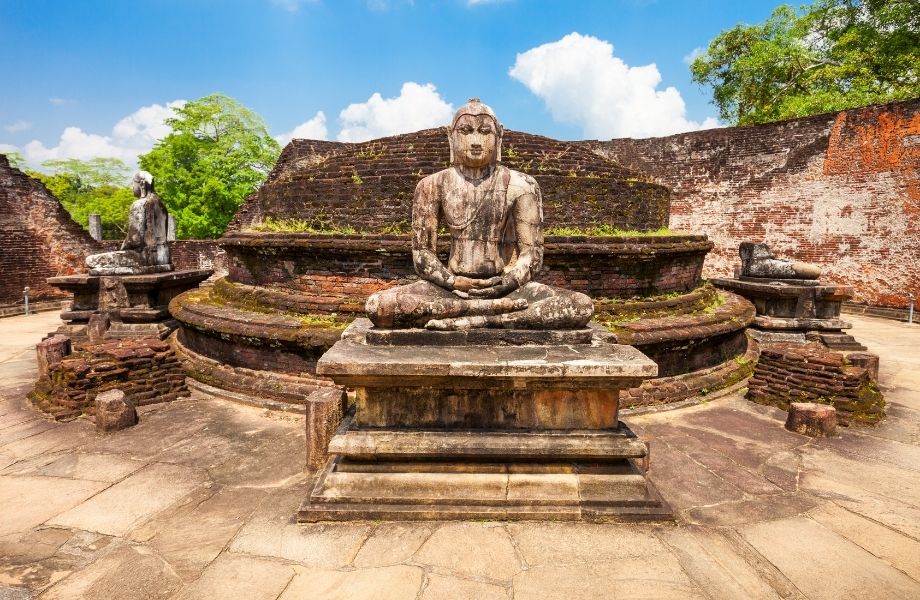

Want to explore a palace built on a flat rock in the 5th century? This is Sigiriya; probably the most famous heritage site in Sri Lanka. The climb to the top is about 1200 steps, but along the way, you can take breaks to indulge in the gorgeous view and also to explore the beautiful frescoes protected in an indentation within the rock. At the summit, you will see remnants of the King’s fortress, a vast water pool and of course, a stunning 360-degree view of the cultural triangle.
The location served as a palace as well as a fortress. Enough remains to provide the visitor a breathtaking glimpse into the builders’ brilliance and artistry.
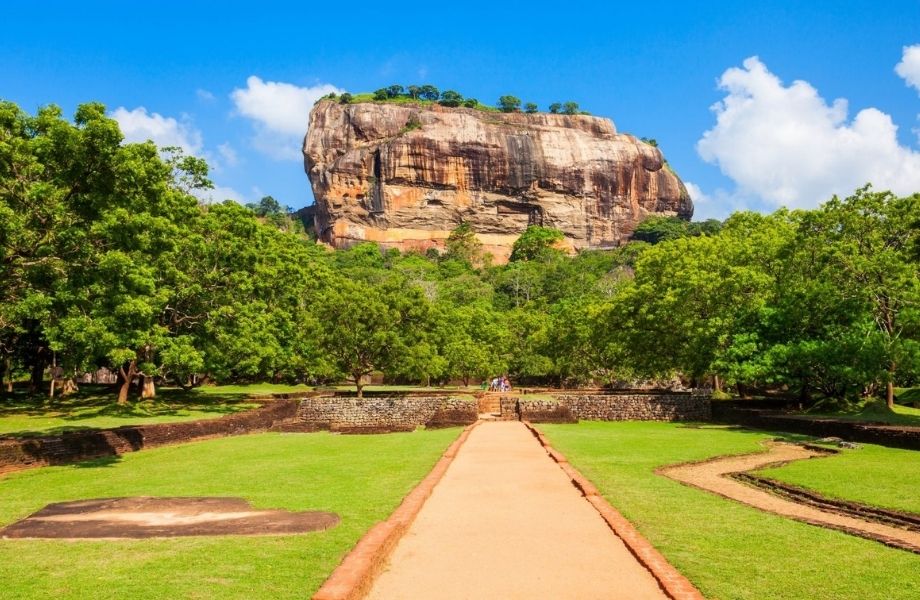
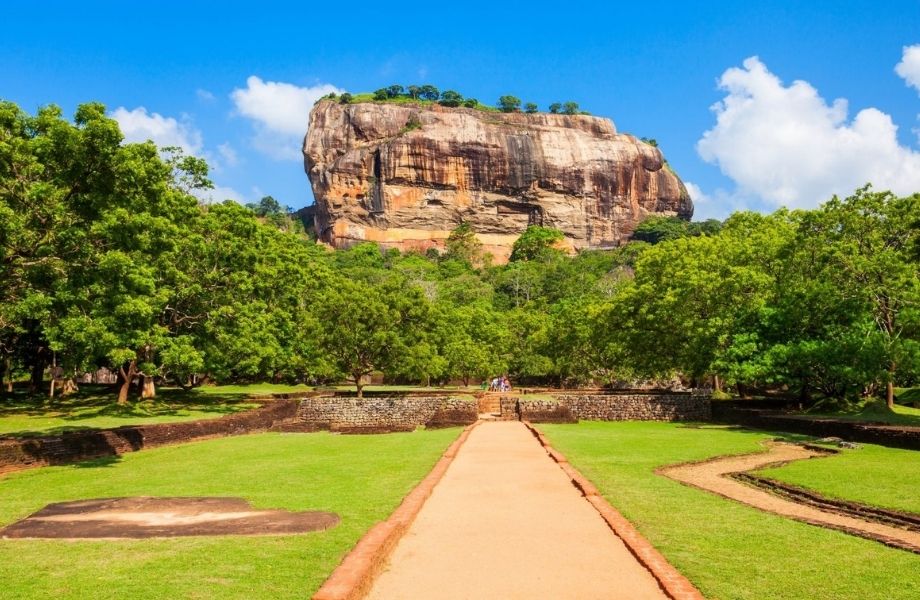

The Sri Dalada Maligawa, or Temple of the Sacred Tooth Relic, is a Sri Lankan temple in Kandy. It was constructed as part of the royal palace complex that holds the Buddha’s tooth relic, a tooth that is treasured by Buddhists. Since ancient times, the relic has played an important role in local politics; it is thought that whoever controls the relic controls the land, driving ancient kings to defend it with tremendous devotion. From 1592 to 1815, Kandy was the capital of the Sinhalese Kings, defended by the mountainous terrain and challenging approach. UNESCO has designated the city as a world historic site also as part because of the temple.
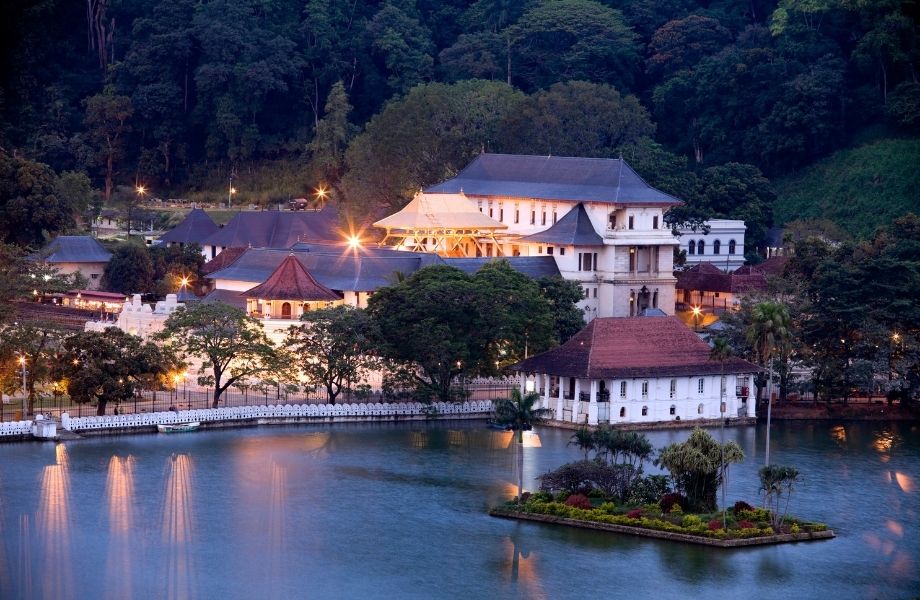
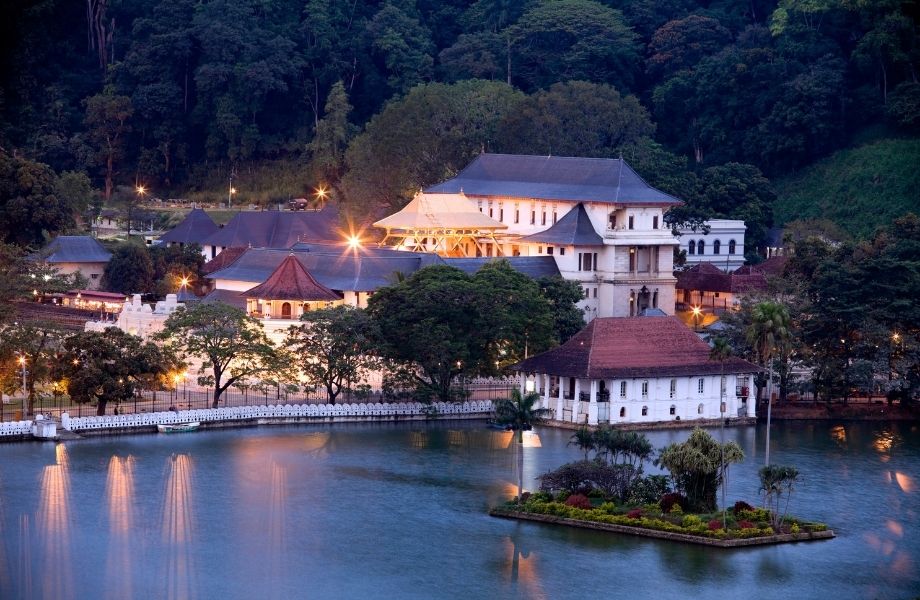

Galle is a town on Sri Lanka’s southwest coast, 119 kilometers (74 miles) from Colombo. Galle was known as Gimhathiththa (although Ibn Batuta refers to it as Qali in the 14th century) until the Portuguese arrived in the 16th century, when it was the island’s main port. Before the arrival of the British, who created the harbor at Colombo, Galle reached its pinnacle of development in the 18th century.
The Portuguese built a Fort in Galle in 1505, but it took off after the Dutch expanded it in 1663. Around the Galle Fort, you can see Dutch Churches, Old Dutch houses, and a Dutch Hospital. The thriving community around the fort makes it a vibrant place, with boutique shops, galleries, cafes, restaurants, and much more.
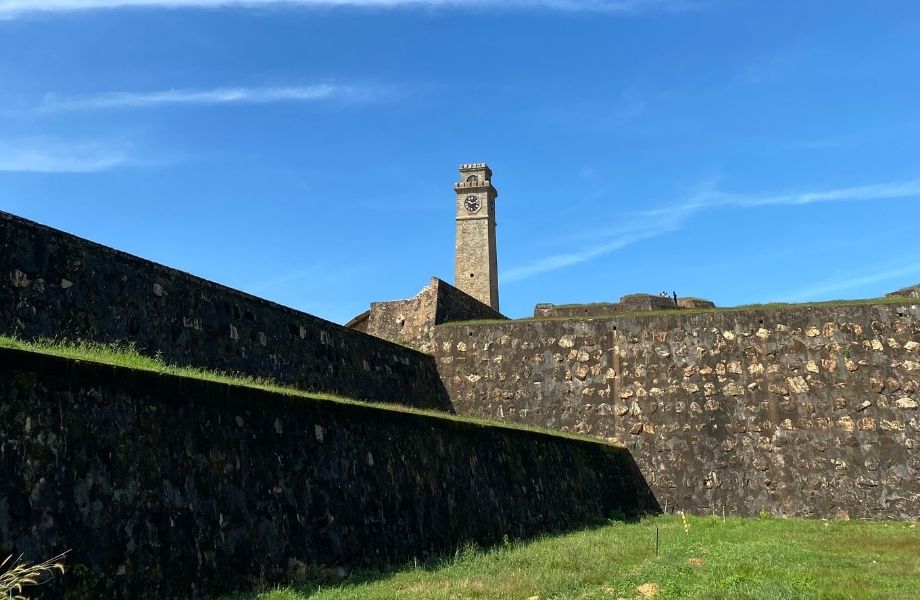
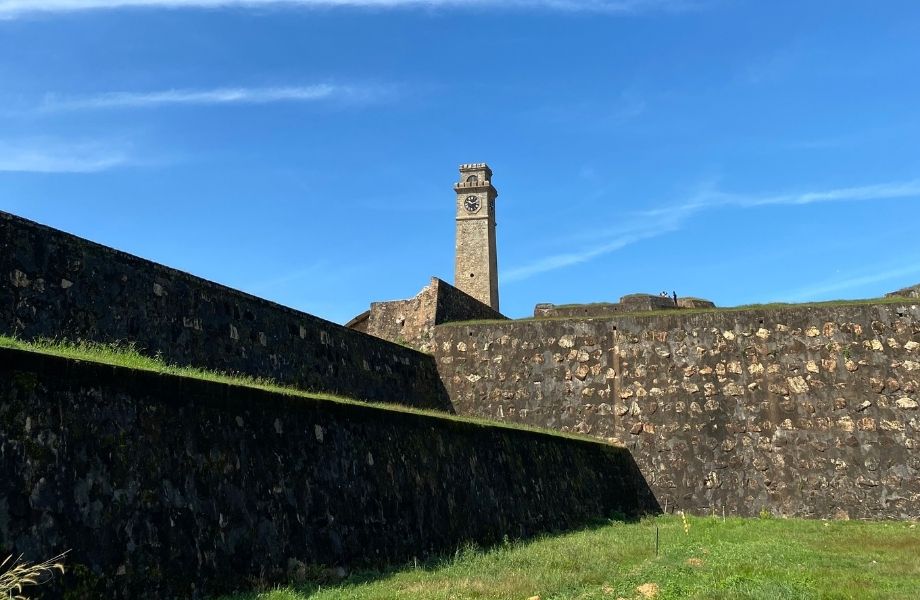

A recent addition to the UNESCO World Heritage Sites (1991), this site lies 148 kilometers (92 miles) east of Colombo. It is Sri Lanka’s largest and best-preserved cave temple complex. The rock rises 160 meters (525 feet) above the surrounding plains below. There are about 80 caves in the area that have been reported. The main attractions are spread out among five caves with statues and paintings. This collection of artworks and statues depicts Buddha and his life. There are 153 Buddha statues, 3 Sri Lankan king statues, and 4 gods and goddesses statues in all. Two Hindu gods, god Vishnu and god Ganesh, are depicted in the last four. The murals take up 2,100 square meters of space. Buddha’s temptation by Mara (devil) and Buddha’s first sermon are among the scenes depicted on the cave walls.
This has been a point of attraction for pilgrims for over 22 centuries

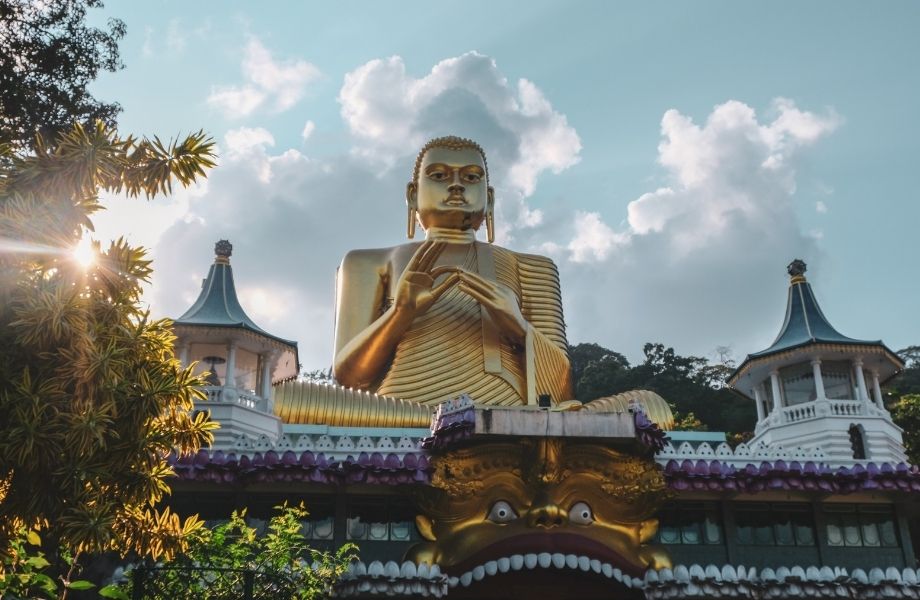

In Sri Lanka, the Central Highlands have been designated as a UNESCO World Heritage Site. Peak Wilderness Protected Area, Horton Plains National Park, and Knuckles Conservation Forest are all part of the site. These are rain forests at elevations of up to 2,500 meters (8,200 feet). Several mammal species can be found in these areas.
The montane and submontane moist forests over 1,000 meters (3,300 feet) in the central highlands and the Knuckles mountain range make up the Sri Lankan montane rain forests. This ecoregion is home to half of Sri Lanka’s endemic flowering plants and 51% of the island’s endemic animals. There are five strictly endemic mammals and eight near-endemic mammals in this ecoregion. There are also five strict endemic bird species and 20 near endemics in the ecoregion. The site incorporates three protected areas.
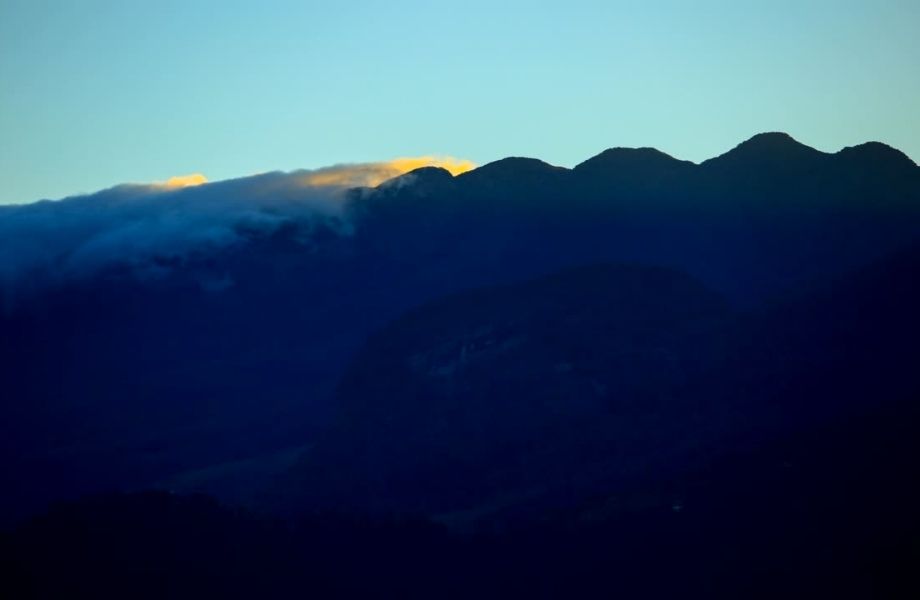
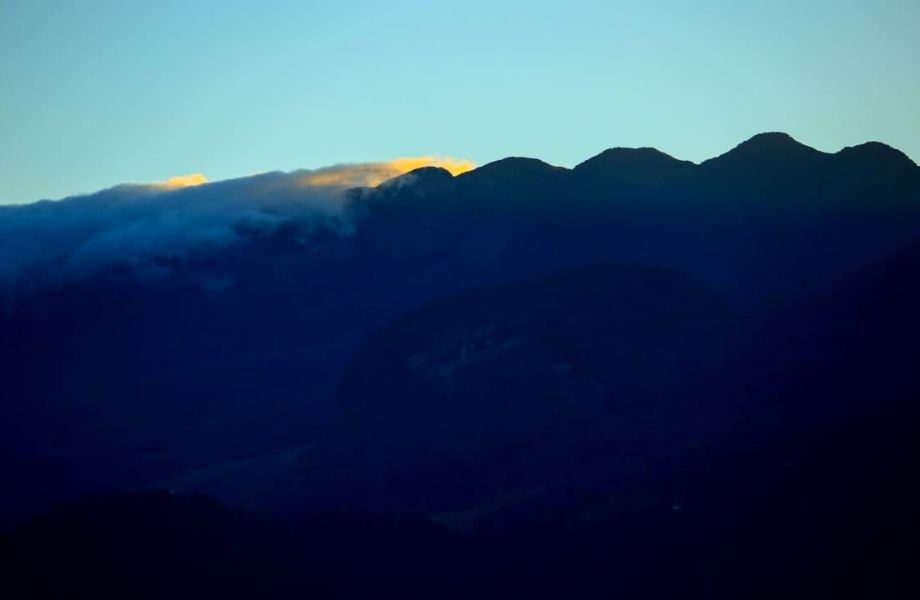

Sri Lanka’s Sinharaja Forest Reserve is a national park. It is internationally significant, having been classified by UNESCO as a Biosphere Reserve and World Heritage Site.
The steep virgin rainforest, which is part of the Sri Lanka lowland rain forests ecoregion, was named a World Biosphere Reserve in 1978 and a World Heritage Site in 1989, and was rescued from the worst of commercial logging by its inaccessibility. The name of the reserve translates to “Kingdom of the Lion.”
The reserve is only 21 kilometers (13 miles) long on the east-west axis and 7 kilometers (4 miles) long on the north-south axis, but it is home to a plethora of endemic species, including trees, insects, amphibians, reptiles, birds, and mammals.
Wildlife is less visible than in dry-zone national parks like Yala because of the tropical gardens. Elephants aren’t present, and the 15 or so leopards that do exist are rarely seen. The endemic Purple-faced Langur is the most common bigger mammal.
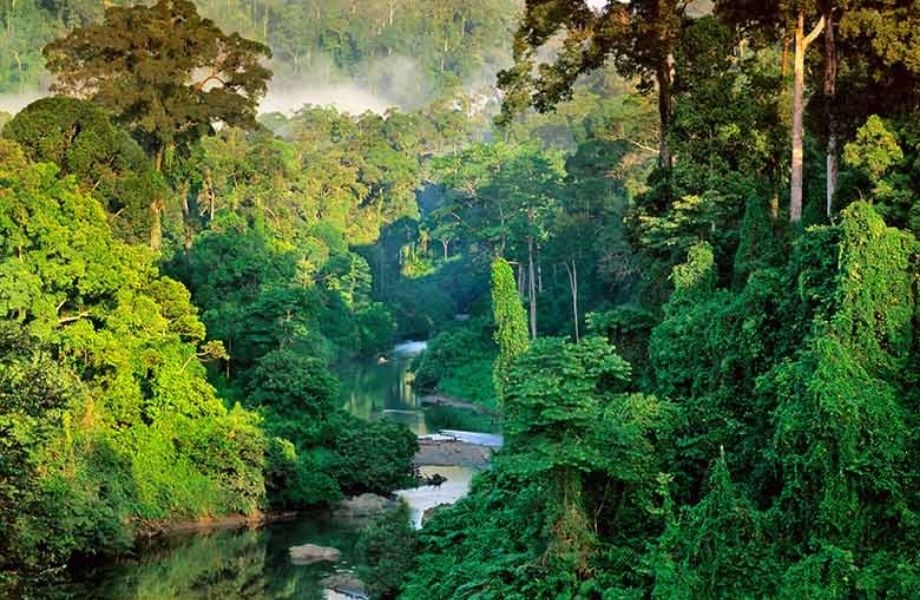
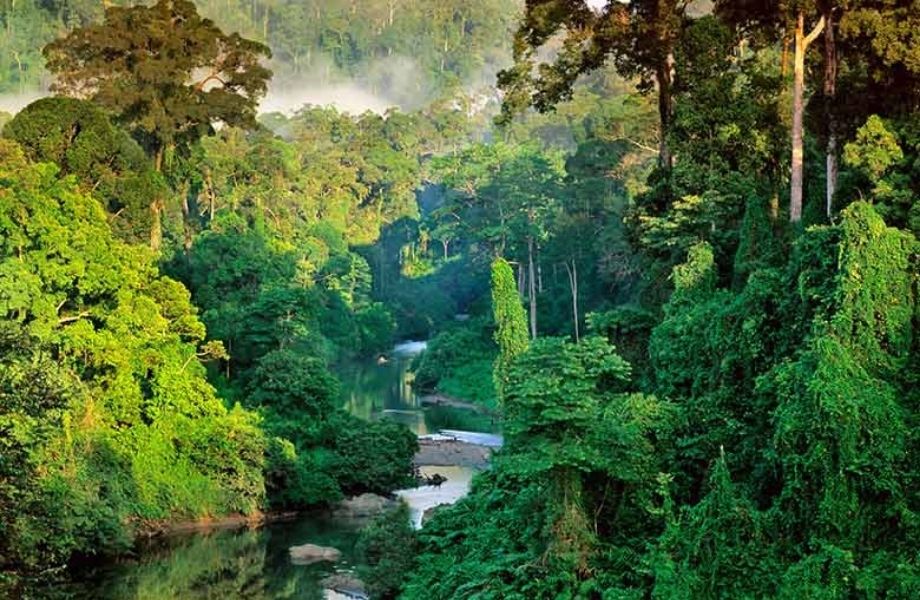

It is Sri Lanka’s earliest ancient capital, and it served as the country’s capital for the longest period of time. It is significant to locals in terms of religion, history, and culture, and it is well-known around the world for the well-preserved remnants of the Great Sri Lankan Civilization.
The largest of the ancient cities of Sri Lanka, Anuradhapura has an area of about 16 square miles with sprawling ruins, temple remnants stone Stupas and Buddhist monasteries. The most popular of these are the Ruwanweliseya Dagoba built in 140BC and the huge holy fig tree believed to be where Lord Buddha was enlightened.
King Vijayabahu I, who vanquished the Chola invaders in 1070 CE and reunited the country under a national sovereign, made Polonnaruwa the capital city for the first time. While Vijayabahu’s victory and the relocation of kingdoms to the more strategic Polonnaruwa is noteworthy, the true Polonnaruwa Hero of history is his grandson, Parakramabahu I. During the Chola dynasty’s short reign, the city of Polonnaruwa was known as Jananathamangalam.
Polonnaruwa was the second capital of Sri Lanka, after Anuradhapura. Bhramanic constructions and a garden city from the chola civilization of the 12th century are some of the remains that can be found here. Tombs, Temples and other ruins are included in the archaeological attractions of Polonnaruwa.
Want to explore a palace built on a flat rock in the 5th century? This is Sigiriya; probably the most famous heritage site in Sri Lanka. The climb to the top is about 1200 steps, but along the way, you can take breaks to indulge in the gorgeous view and also to explore the beautiful frescoes protected in an indentation within the rock. At the summit, you will see remnants of the King’s fortress, a vast water pool and of course, a stunning 360-degree view of the cultural triangle.
The location served as a palace as well as a fortress. Enough remains to provide the visitor a breathtaking glimpse into the builders’ brilliance and artistry.
The Sri Dalada Maligawa, or Temple of the Sacred Tooth Relic, is a Sri Lankan temple in Kandy. It was constructed as part of the royal palace complex that holds the Buddha’s tooth relic, a tooth that is treasured by Buddhists. Since ancient times, the relic has played an important role in local politics; it is thought that whoever controls the relic controls the land, driving ancient kings to defend it with tremendous devotion. From 1592 to 1815, Kandy was the capital of the Sinhalese Kings, defended by the mountainous terrain and challenging approach. UNESCO has designated the city as a world historic site also as part because of the temple.
Galle is a town on Sri Lanka’s southwest coast, 119 kilometers (74 miles) from Colombo. Galle was known as Gimhathiththa (although Ibn Batuta refers to it as Qali in the 14th century) until the Portuguese arrived in the 16th century, when it was the island’s main port. Before the arrival of the British, who created the harbor at Colombo, Galle reached its pinnacle of development in the 18th century.
The Portuguese built a Fort in Galle in 1505, but it took off after the Dutch expanded it in 1663. Around the Galle Fort, you can see Dutch Churches, Old Dutch houses, and a Dutch Hospital. The thriving community around the fort makes it a vibrant place, with boutique shops, galleries, cafes, restaurants, and much more.
A recent addition to the UNESCO World Heritage Sites (1991), this site lies 148 kilometers (92 miles) east of Colombo. It is Sri Lanka’s largest and best-preserved cave temple complex. The rock rises 160 meters (525 feet) above the surrounding plains below. There are about 80 caves in the area that have been reported. The main attractions are spread out among five caves with statues and paintings. This collection of artworks and statues depicts Buddha and his life. There are 153 Buddha statues, 3 Sri Lankan king statues, and 4 gods and goddesses statues in all. Two Hindu gods, god Vishnu and god Ganesh, are depicted in the last four. The murals take up 2,100 square meters of space. Buddha’s temptation by Mara (devil) and Buddha’s first sermon are among the scenes depicted on the cave walls.
This has been a point of attraction for pilgrims for over 22 centuries
In Sri Lanka, the Central Highlands have been designated as a UNESCO World Heritage Site. Peak Wilderness Protected Area, Horton Plains National Park, and Knuckles Conservation Forest are all part of the site. These are rain forests at elevations of up to 2,500 meters (8,200 feet). Several mammal species can be found in these areas.
The montane and submontane moist forests over 1,000 meters (3,300 feet) in the central highlands and the Knuckles mountain range make up the Sri Lankan montane rain forests. This ecoregion is home to half of Sri Lanka’s endemic flowering plants and 51% of the island’s endemic animals. There are five strictly endemic mammals and eight near-endemic mammals in this ecoregion. There are also five strict endemic bird species and 20 near endemics in the ecoregion. The site incorporates three protected areas.
Sri Lanka’s Sinharaja Forest Reserve is a national park. It is internationally significant, having been classified by UNESCO as a Biosphere Reserve and World Heritage Site.
The steep virgin rainforest, which is part of the Sri Lanka lowland rain forests ecoregion, was named a World Biosphere Reserve in 1978 and a World Heritage Site in 1989, and was rescued from the worst of commercial logging by its inaccessibility. The name of the reserve translates to “Kingdom of the Lion.”
The reserve is only 21 kilometers (13 miles) long on the east-west axis and 7 kilometers (4 miles) long on the north-south axis, but it is home to a plethora of endemic species, including trees, insects, amphibians, reptiles, birds, and mammals.
Wildlife is less visible than in dry-zone national parks like Yala because of the tropical gardens. Elephants aren’t present, and the 15 or so leopards that do exist are rarely seen. The endemic Purple-faced Langur is the most common bigger mammal.

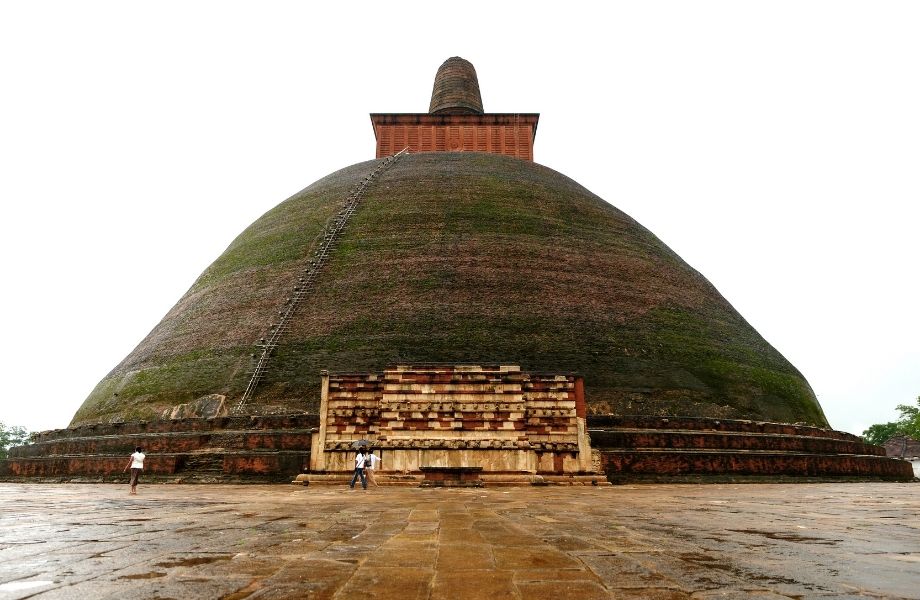






















There are numerous cultural and religious landmarks in Sri Lanka. From old city ruins to temples and shrines, and all in between
Here you can browse our pre-made itineraries or create your very own personalized itinerary to match your needs and budget.
Is Sri Lanka exciting enough for you? Trust us! For such a little island, Sri Lanka packs a powerful punch of excitement and adventures. Reach us or allow our information team to contact you.
Spa Retreats for Ayurvedic therapeutic care, Yoga and meditation practice and courses can all be included in Sri Lanka travel packages. Your Sri Lanka vacation can include boutique hotels, luxury spa resorts on the beach, and in rural surroundings.
Magical Vacations Lanka (Private) Limited,
250, Canal Road, Uswetekeiyawa,
Sri Lanka
Postal Code: 11328
For Inquiries Dial Or WhatsApp
+94 72 240 5198
+94 (77) 108 4703
(24/7)(Only for international inquiries)
General : +94 722 405 198 (WhatsApp)
Email: [email protected]
Site Map
Follow us on